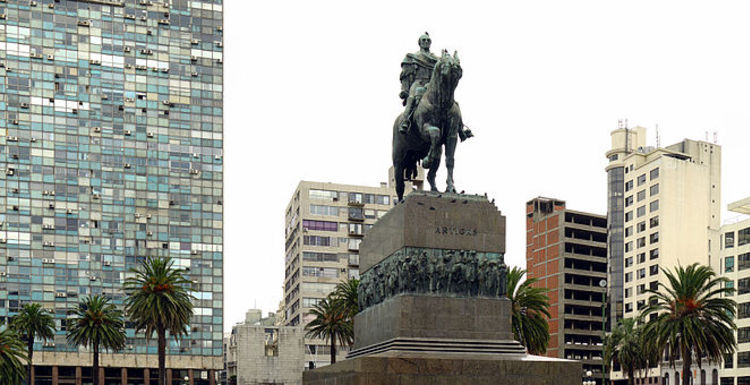Uruguayan First Lady Should Condemn All Perpetrators of Violence, the Military as well as the Tupamaros
In an October 3 interview with The Associated Press, Uruguayan First Lady and former guerrilla activist Lucía Topolansky was asked about the past justification for the execution of unarmed prisoners at the hands of urban guerrillas, known as Tupamaros, during their turbulent uprising against the Uruguayan government in the 1970’s and 1980’s. Topolansky, while being detained at the hands of the military junta (1973-1985), replied, “[h]istory is what it is. We are not going to go back and analyze it.” [1]
While there is no denying that egregious human rights violations were systematically perpetrated by Southern Cone military regimes, Topolansky’s rather lukewarm and evasive remark echoes sentiments often resorted to by supporters of the regional dictatorships that sprung up in order to combat guerrilla movements throughout the 1970’s and 1980’s. These proponents of amnesty claim that one must look towards the future rather than coming to terms with (and thus acknowledging) the past. Both sides of the ideological debate, which violently swept across Latin America amidst the fervor of the Cold War, seem to overlook their own faction’s violations while pointing the finger at the other, stunting any real attempts at national reconciliation.
To be clear, there is a stark contrast between state-sponsored terrorism and a relatively low-level guerrilla insurgency. For example, the desaparecidos (disappeared) in Uruguay number around 200, while neighboring Argentina estimates its own desaparecidos at 30,000, though the exact numbers involved are debatable in the two countries. [2] Right-wing dictatorships in the Southern Cone employed kidnapping, torture, and extrajudicial executions as part of their tactics, later disposing of bodies in crematoriums, mass graves, or in the ocean. In fact, the Punta Carretas shopping mall in Montevideo served as a prison during military rule, a time in which Uruguay had more political incarcerations per-capita than any other country in the world. [3]
The repression and bloodshed were no less severe in neighboring Argentina, where in 1976 the country’s military overthrew President Isabel Perón in order to eliminate the Montoneros, a left-wing guerrilla movement similar to the Tupamaros, which advocated regime change in Argentina. The Navy Mechanic School in Buenos Aires served as a prison and torture center throughout the military dictatorship (1976-1983), during which alleged dissidents (both real and suspected) were boarded onto “death flights,” often drugged before being pushed out of airplanes over the Rio de la Plata. Both Uruguay and Argentina formed part of the larger Operación Condor, a coalition of regional dictatorships bent on the extermination of left-wing insurgencies and anything remotely associated with them.
At the same time, some urban guerrilla movements in the Southern Cone employed tactics of violence and intimidation to spread their goals, though on a smaller scale and with a less systematic approach. The Tupamaros enjoyed considerable popular support in Uruguay until about 1970, when their actions – which ranged from attacking Montevideo policemen to using violent threats to disrupt Uruguay’s tourism industry – became increasingly bold. [4] Similarly, the Montoneros raised some $60 million USD through kidnapping and extortion, while also engaging in shootings, bombings, and political assassinations in Argentina. [5] Such actions are morally reprehensible under any circumstances because of their proven impacts on non-combatants.
The mutual recognition of abuses and excesses is especially important given that, in spite of truth commissions in Uruguay, unresolved issues of impunity for war criminals remain at the forefront of national consciousness. For example, this past February a popular demonstration of some 300 people erupted at the Supreme Court in Montevideo over the legislative decision that ruled against pursuing further trials against human rights perpetrators. [6]
Similarly, in Buenos Aires, the mothers of desaparecidos conduct marches every Thursday in Plaza de Mayo, the main square in the Argentine capital. In more conservative neighborhoods of Buenos Aires and Montevideo, support generally falls in favor of the military. It is understandable that as a First Lady, Topolansky would like to be diplomatically neutral on the subject. However, given Uruguay’s status as a country that today respects human rights, as well as the contentious nature of legal procedures regarding transitional justice, a clear condemnation of violations by all parties is necessary to promote national reconciliation.
William Kinney, Research Associate at the Council on Hemispheric Affairs
Please accept this article as a free contribution from COHA, but if re-posting, please afford authorial and institutional attribution. Exclusive rights can be negotiated.
For additional news and analysis on Latin America, please go to: LatinNews.com and Rights Action
References
[1] Warren, Michael and Haberkorn, Leonardo, “Uruguay’s First Lady Like No Other,” Associated Press, October 3, 2013, accessed October 16, 2013. http://hosted2.ap.org/APDEFAULT/cae69a7523db45408eeb2b3a98c0c9c5/Article_2013-10-03-Uruguay-First%20Lady/id-8cbc9fc8e0264bfd88c6c14dadbf28d7
[2] Ferguson, Sam, “Uruguayan Voters Reject Chance to Prosecute Dictators,” Truthout, October 28, 2009, accessed October 16, 2013. http://www.truth-out.org/archive/item/86583:uruguayan-voters-reject-chance-to-prosecute-dictators: Fearns, Les and Fearns, Daisy, “Countries of the World – Argentina,” (London: Evans Brothers, 2005), 54.
[3] “Burying the Past? Former Uruguayan Prison Becomes Shopping Mall,” Latin America News Dispatch, December 21, 2009, accessed October 16, 2013. http://latindispatch.com/2009/12/21/feature-burying-the-past-former-uruguayan-prison-becomes-shopping-mall/
[4] Freeman, Michael, “Freedom or Security: The Consequences for Democracies Using Emergency Powers to Fight Terror,” (Westport: Praeger Publishers, 2003) 99.
[5] Martin, Gus, “Understanding Terrorism: Challenges, Perspectives, and Issues,” (Los Angeles, SAGE, 2013) 216.
[6] “Demonstration Against Uruguay Supreme Court to Protect Human Rights Rulings,” MercoPress, February 25, 2013, accessed October 21, 2013. http://en.mercopress.com/2013/02/25/demonstration-against-uruguay-supreme-court-to-protest-human-rights-rulings


